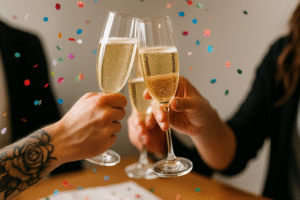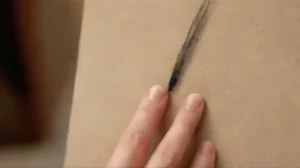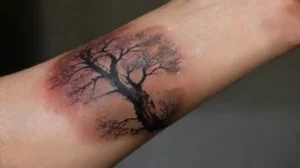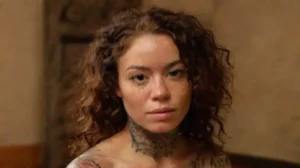Body modification has become an influential form of personal expression, allowing individuals to showcase their identity through various artistic and cosmetic alterations. This practice often represents more than superficial changes; it reflects deeper values and personal stories. As society’s perceptions evolve, so does the language used to describe these transformations, emphasizing the importance of personal choice and creativity.
The vocabulary surrounding body modification is rich and varied, serving to underscore the uniqueness of each person’s journey. Words chosen to describe modifications can foster a sense of empowerment and authenticity. They also help normalize body art and piercings as legitimate forms of self-expression, breaking down stereotypes and encouraging acceptance.
Expressions of Personal Identity Through Embellishments
Expressions of individuality become evident in how people select their tattoos, piercings, and other modifications. These choices are often deliberate, aiming to communicate personal stories, beliefs, or aspirations. Each design or alteration is a testament to the person’s desire to stand out and assert their character.
Language plays a key role in framing these choices, with terms like “body art,” “ink,” or “adornments” highlighting their status as deliberate creative expressions. Such words reinforce the idea that modifications are a form of wearable art, crafted to reflect one’s inner truth. This perspective encourages broader acceptance and appreciation.
Moreover, the vocabulary used to describe modifications often emphasizes empowerment and autonomy. Words like “self-expression” and “personal statement” remind us that these choices are integral to one’s identity. They promote the notion that body modifications are a celebration of uniqueness and individuality.
The Cultural Significance Behind Modifications
In many cultures, body modification once held profound spiritual or social significance. Terms such as “tribal markings” or “ritual tattoos” emphasize their deep roots in community and tradition. These words serve to honor the cultural heritage embedded in body adornment practices.
Today, many individuals incorporate cultural elements into their modifications as a way to connect with ancestral roots. The language used in this context often highlights heritage, such as “ancestral symbols” or “cultural identifiers.” This language bridges personal identity with collective history, fostering a sense of belonging.
At the same time, modern vocabulary surrounding body modification continues to evolve, emphasizing respect for cultural origins. Words like “cultural tribute” or “tradition-inspired” demonstrate appreciation and acknowledgment of the rich history behind these practices. This respectful terminology helps in fostering dialogue and understanding across diverse communities.
Artistic Expression and Creativity
Body modifications are increasingly recognized as a canvas for artistic expression, with terminology that highlights their artistic nature. Descriptions like “body art,” “designs,” or “visual storytelling” underscore the creative aspect of modifications. This language elevates body modification from mere cosmetics to masterpieces of personal artistry.
Artists and enthusiasts often use descriptive words to communicate their vision, such as “intricate,” “bold,” or “avant-garde.” These terms emphasize the imagination and skill involved in body modification, reinforcing its status as a true form of art. This perspective encourages broader appreciation and respect for this creative field.
The terminology also fosters a celebration of originality, with words like “customized,” “personalized,” or “bespoke” highlighting the individual nature of each modification. Such language promotes the idea that every modification is a unique expression of personal creativity and style.
Challenging Stereotypes and Breaking Taboos
Language surrounding body modification has historically been laden with negative connotations, but this is changing. Words like “alteration” or “modification” are increasingly used to normalize these practices. They emphasize change and transformation, removing the stigma often associated with body art.
Terms like “self-empowerment” and “body sovereignty” are now common in discourses that challenge taboos. These words reinforce the idea that body modifications are a form of personal liberation and autonomy. They empower individuals to make choices free from societal judgment.
Furthermore, embracing inclusive vocabulary helps foster a more accepting environment. Using terms such as “body positivity” or “diverse expressions” celebrates variety and individuality. This language shift is vital for breaking down stereotypes and promoting freedom of self-expression.
Psychological and Emotional Dimensions
Words describing body modification often reflect their psychological and emotional importance. Terms like “healing,” “empowerment,” or “affirmation” highlight the transformative effects these modifications can have on a person’s sense of self. Recognizing this emotional aspect is crucial in understanding their significance.
Many individuals use language that emphasizes personal growth, such as “rebellion,” “rebirth,” or “remaking.” These words illustrate how body modifications serve as metaphors for internal changes, allowing people to redefine their identity and reclaim their bodies.
The vocabulary also underscores the therapeutic role of modifications, with phrases like “catharsis” or “self-care.” Acknowledging this dimension helps destigmatize body modification as a meaningful and powerful act of self-love and acceptance.
In summary, the language surrounding body modification plays a vital role in shaping perceptions of individuality and personal expression. Words that celebrate creativity, cultural significance, and empowerment help normalize these practices and honor their multifaceted meanings.
By choosing language that emphasizes respect, artistry, and autonomy, society can foster greater acceptance of body modifications. This shift in terminology supports a broader movement toward embracing diverse identities and honoring each person’s unique expression of self.







